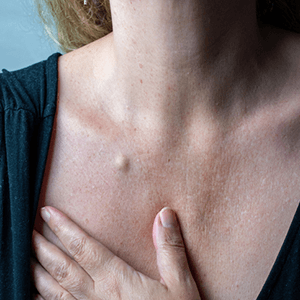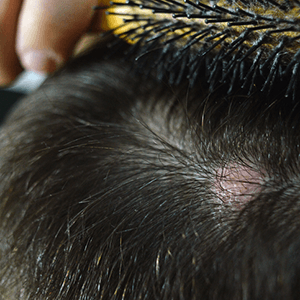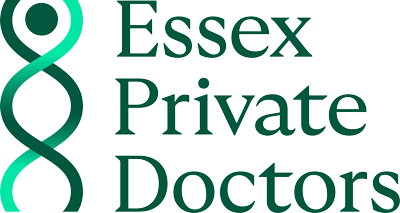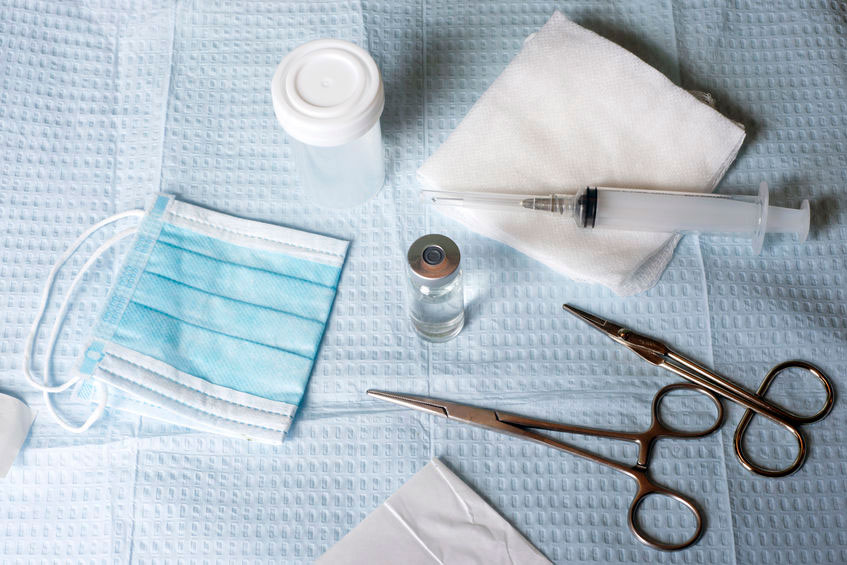Sebaceous Cyst Removal
Are you fed up with a cyst that looks unsightly, or has become sore or infected? If you’re looking for cyst removal, then our skilled Doctors can help. We offer private cyst removal for patients living in Essex, including Shenfield, Brentwood, Billericay, Warley, Hutton, Mountnessing, Ingatestone, Ongar, Chelmsford, Wickford, Southend, Hornchurch, Romford, Grays, and surrounding areas.
There are many different types of skin cysts, and in the past we used to refer to all of them as ‘sebaceous’ cysts, although dermatologists tend to use the following terms:
Epidermoid Cysts
These develop in the top layer of the skin, and contain a cheesy, toothpaste-like material made of soggy keratin. Epidermoid cysts are slow-growing lumps that have a point in the middle, known as a punctum. They’re not painful (unless they become infected), and they commonly occur on the face, neck, chest and back.
They are benign (non-cancerous) in nature, and they form when the natural process of skin cell shedding doesn’t occur properly, and skin cells become trapped beneath the skin’s surface. Epidermal skin cells produce a protein called keratin, and the keratin build-up from the trapped cells eventually forms a cyst.
Dermoid Cysts
Sometimes a cyst will form in the deeper layer of skin known as the dermis, and these usually occur when a hair follicle becomes blocked. These cysts will often contain sebum (skin oil) and are also known as sebaceous cysts, or steatocystomas.
Pilar Cysts (Scalp Cysts)
Pilar cysts grow from hair follicles, and we mostly see these on the scalp (which is why they are also known as scalp cysts). They develop from the outer hair root sheath, and they fill up with keratin. They look like white or yellow dome-shaped lumps under the scalp skin. They are more common in women than men, and there’s a tendency for these to run in families – if you’ve had a parent who’s had a pilar cyst, you’ve a one in two chance of developing one yourself.



Can I squeeze a cyst?
It can be tempting (and even satisfying) to squeeze a cyst, but they quickly refill, and squeezing a cyst can make it worse in the long run, because it can encourage infection and scarring.
Can cysts go away on their own?
Some epidermoid cysts may drain on their own and spontaneously disappear. Most skin cysts are harmless, but they can become infected and painful, look unsightly, or be a nuisance, e.g. if you have a cyst that is rubbed by clothing.
How do Doctors treat cysts?
If a cyst becomes infected, it may be necessary to take a short course of antibiotics to calm it, and if it’s regularly becoming a nuisance, or if you’re fed up with how it looks or feels, it can be removed with a minor surgical procedure. It’s important that any infection has settled before removing the cyst.
When should a cyst be removed?
Most cysts are benign, but you may choose to have the cyst removed if:
You don’t like how the cyst looks
The cyst is getting bigger
If the cyst is catching or rubbing
If you catch the cyst when shaving
If it’s regularly becoming infected or leaking
If it’s tender or feels inflamed
What happens during cyst removal surgery?
Draining a cyst won’t get rid of it in the long-run, because it will simply refill, but we can remove the entire cyst under a local anaesthetic procedure.
Private cyst removal in Essex
If you’re looking for cyst removal, Dr Henry Grundy-Wheeler is here to help. During your specialist skin surgery consultation, your problem will be carefully assessed and you’ll be given the opportunity to discuss all treatment options, including surgery.
During the procedure, the skin is cleaned and local anaesthetic is gently injected under the skin and around the cyst. A small incision is made over the cyst, and the cyst is peeled out from under the skin. The incision is carefully stitched together, leaving a small scar. Care is taken to achieve the best-possible cosmetic appearance. The stitches may be absorbable or removed a few days later (usually around 10 days).
The whole procedure takes around 30 minutes, and you’ll leave with a dressing over the area. It’s important to keep this clean and dry, and you should avoid swimming, or activities that may cause rubbing of the surgical site. The wound will take a couple of weeks to completely heal, and you’ll be advised when to return for stitch removal.
What are the risks of having cyst removal?
Any incision will produce a scar, but our Doctors are highly skilled in producing an excellent cosmetic outcome. There is a small risk of bleeding or infection after the surgery. Very occasionally a cyst can recur.
How much does cyst removal cost?
A skin consultation is first required, and then you will return to have your procedure on a different day. Cyst removal costs can be seen here, and you’ll be advised of the amount at your consultation. Occasionally it may be necessary to send a skin lesion for histological examination under a microscope in a laboratory.
If you would like to book a consultation about your cyst, we’re here to help. Book today.





